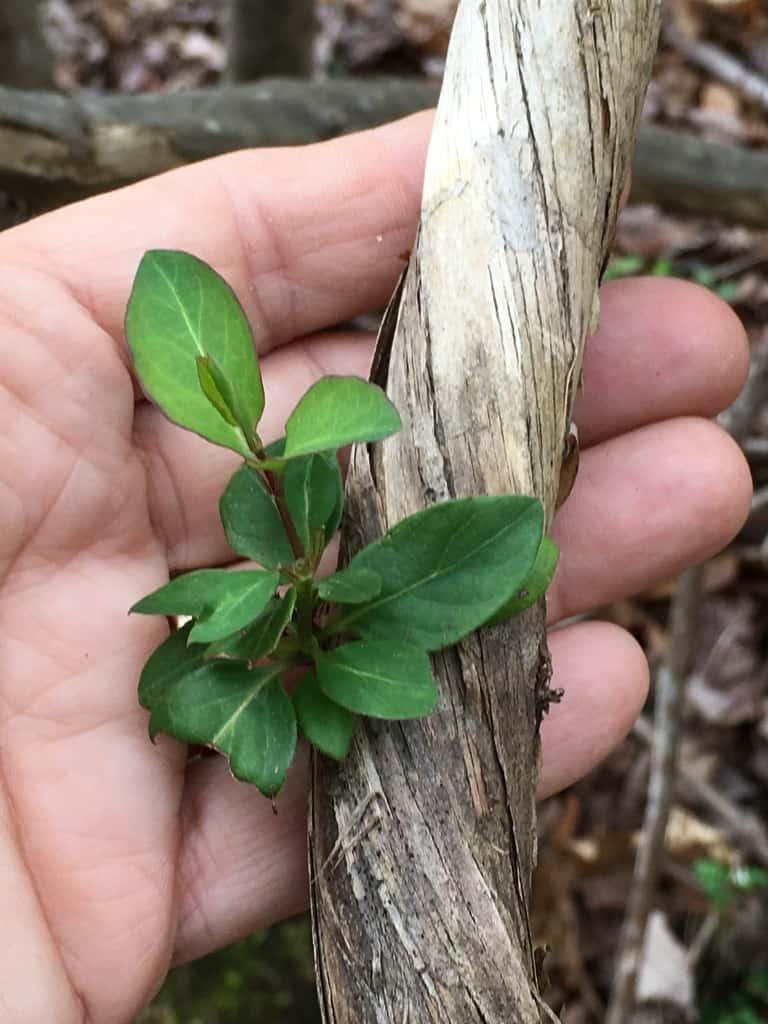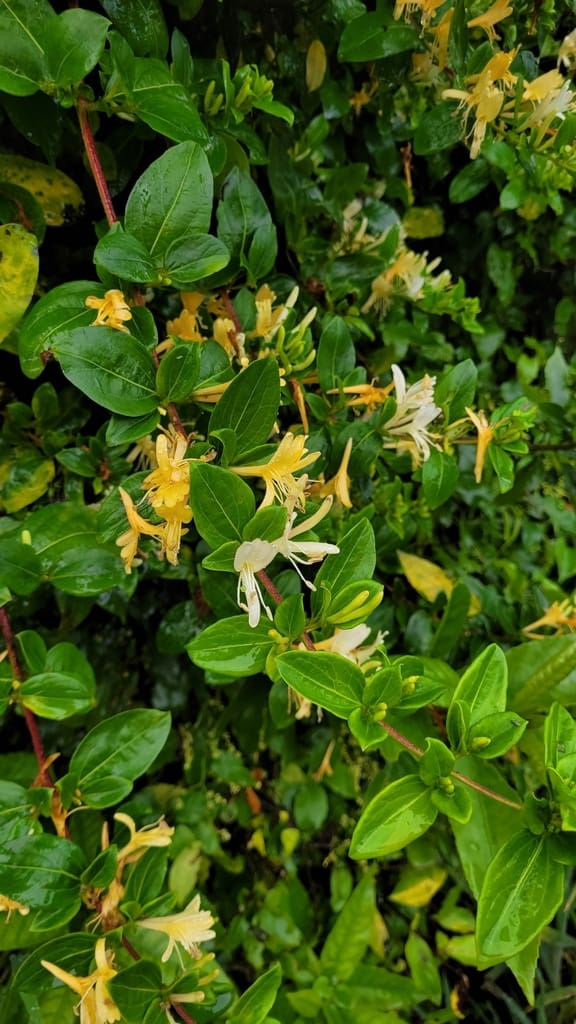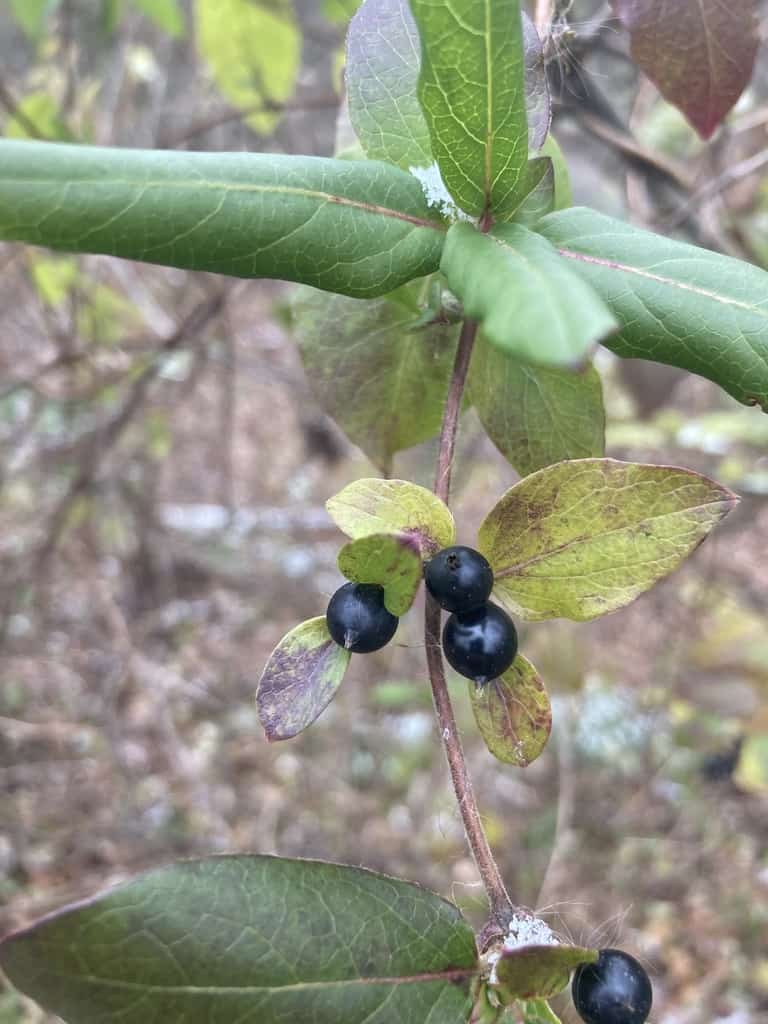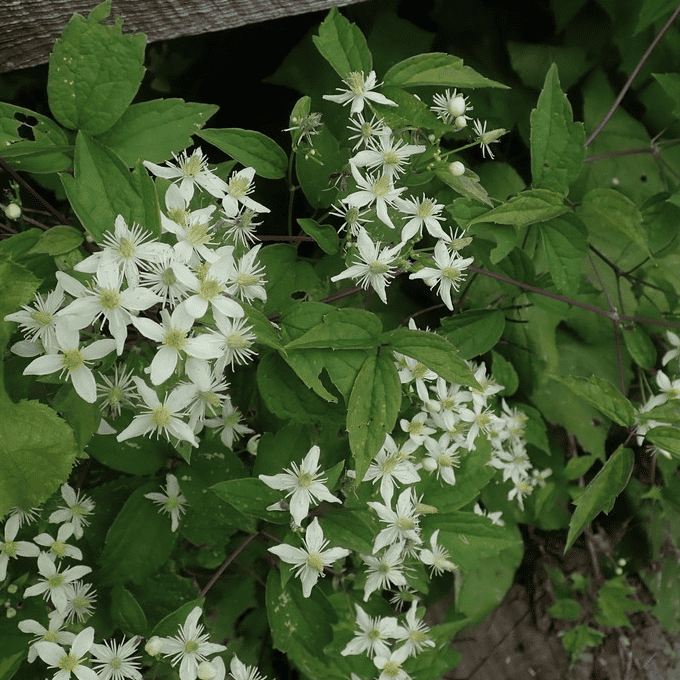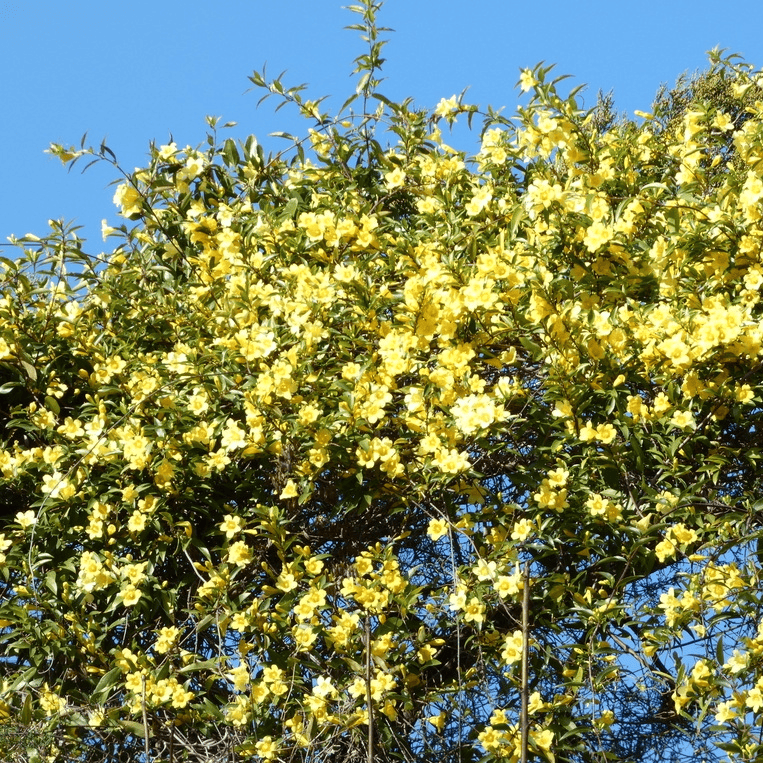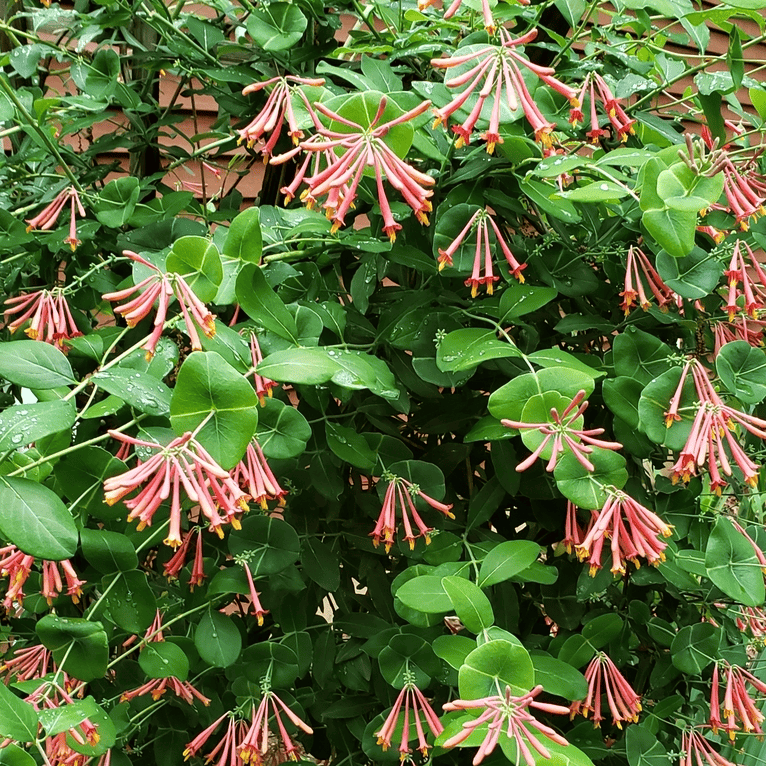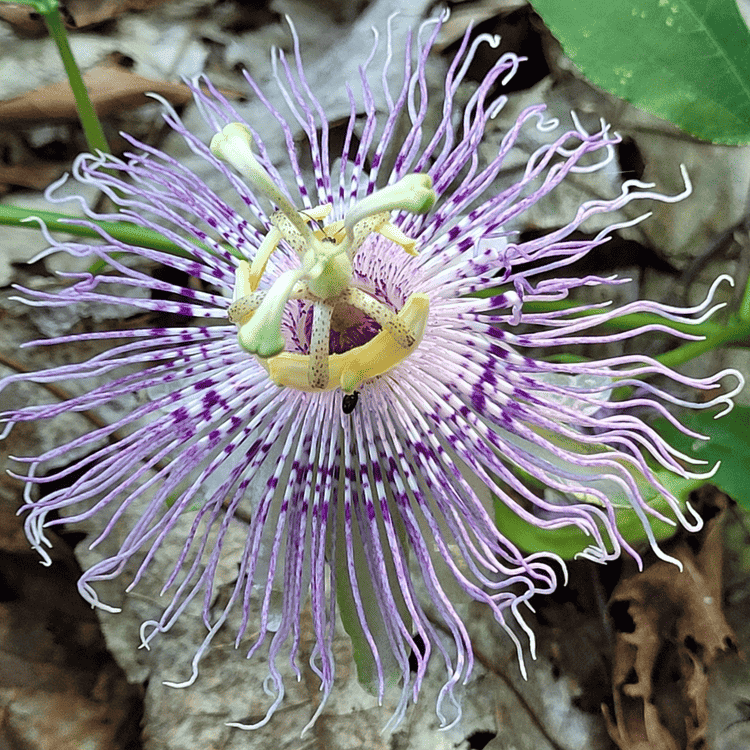Japanese Honeysuckle Lonicera japonica is an aggressive semi-evergreen to evergreen woody vine introduced as an ornamental into the U.S. from Japan through England in 1806. This species is perhaps the most common invasive plant species in the South. Dense infestations of Japanese Honeysuckle occur along forest edges, in right-of-ways, and below dense forest canopies. It spreads primarily by rooting at nodes in the vine, but also by animal-dispersed seeds.
Japanese Honeysuckle negatively impacts native plants by twining around and girdling small trees and forming dense mats that block light to plants below. It is classified by the Louisiana Department of Wildlife and Fisheries as a Tier II invasive species defined as “currently causing moderately negative impacts on wildlife or natural communities in Louisiana”. Japanese Honeysuckle is valued as deer browse and still planted in wildlife food plots where it can spread into adjacent forest.
Landscape With These Native Plants Instead:

